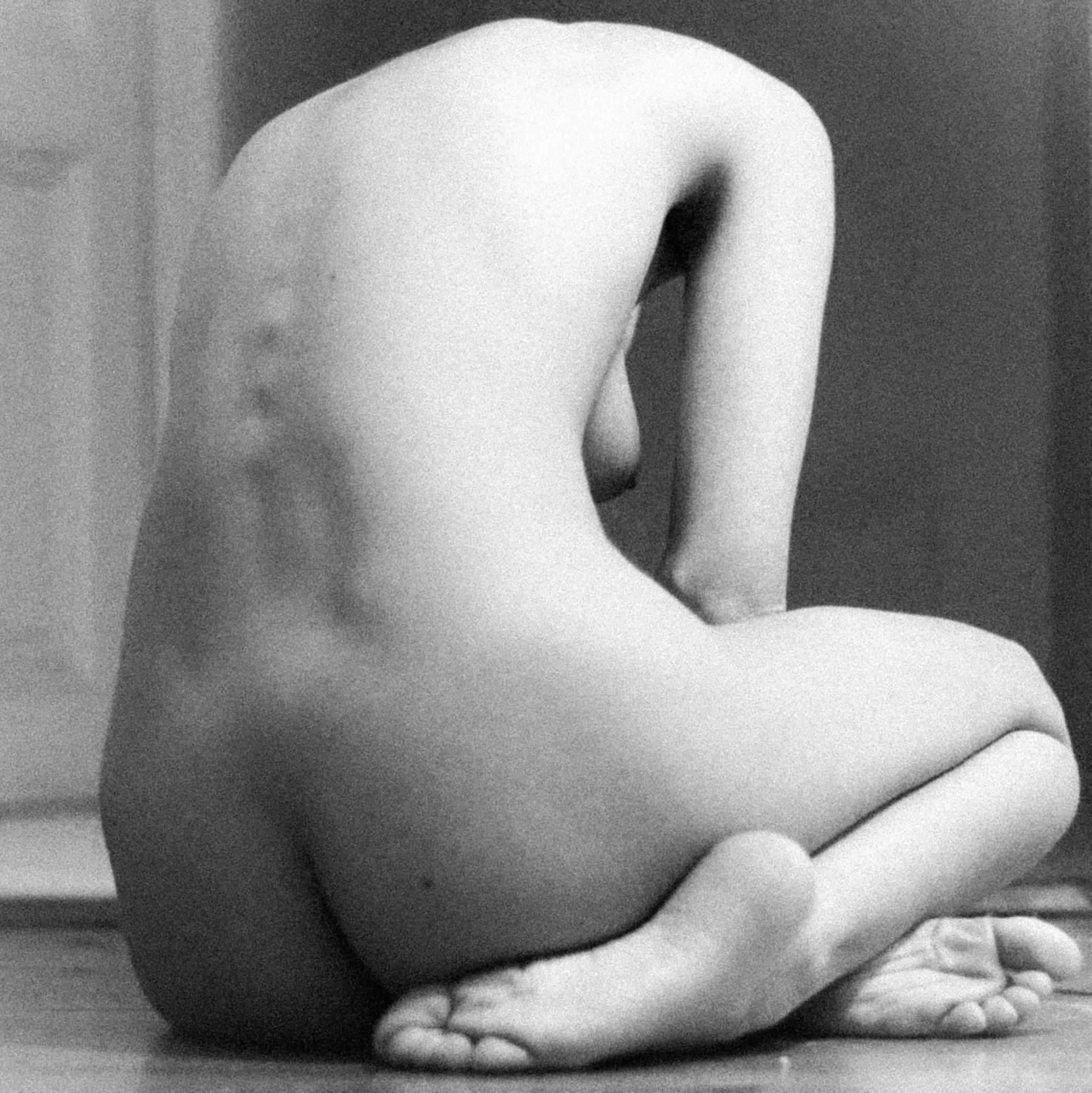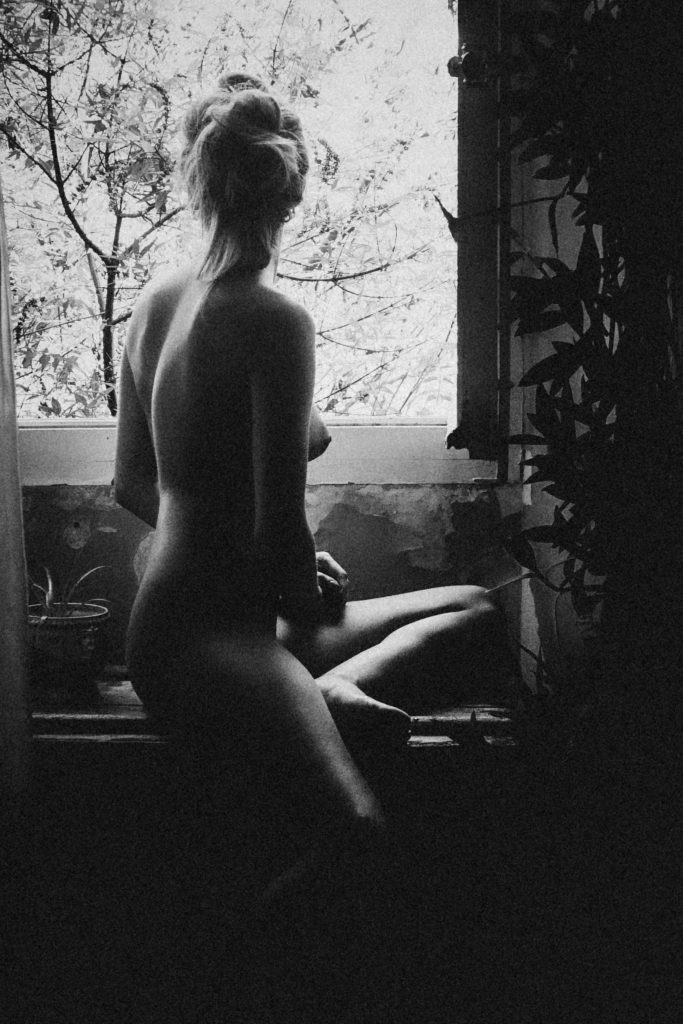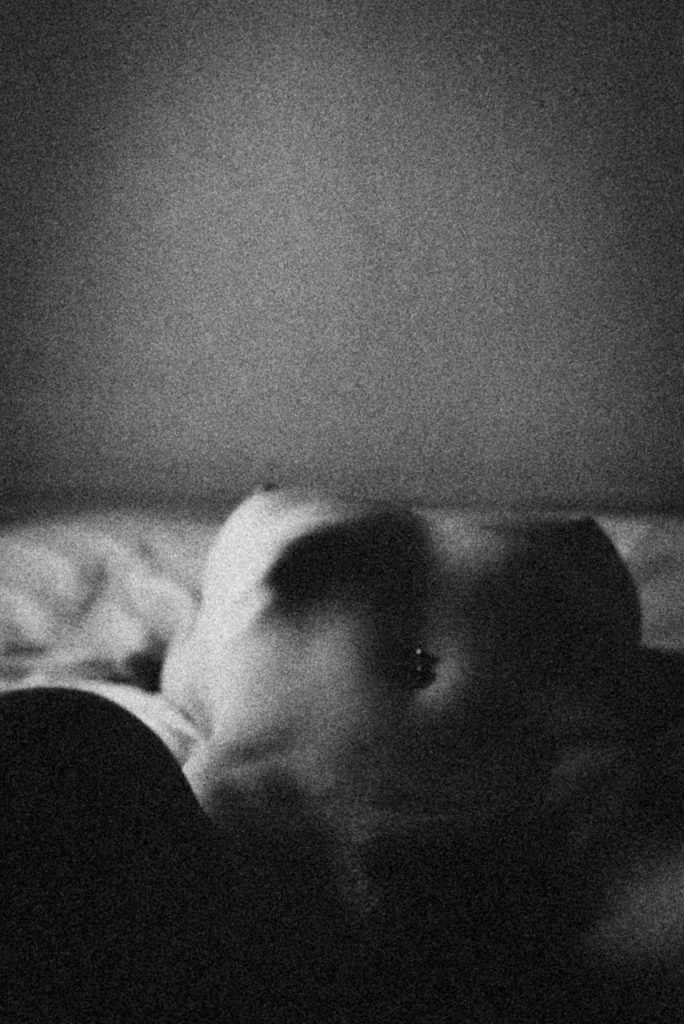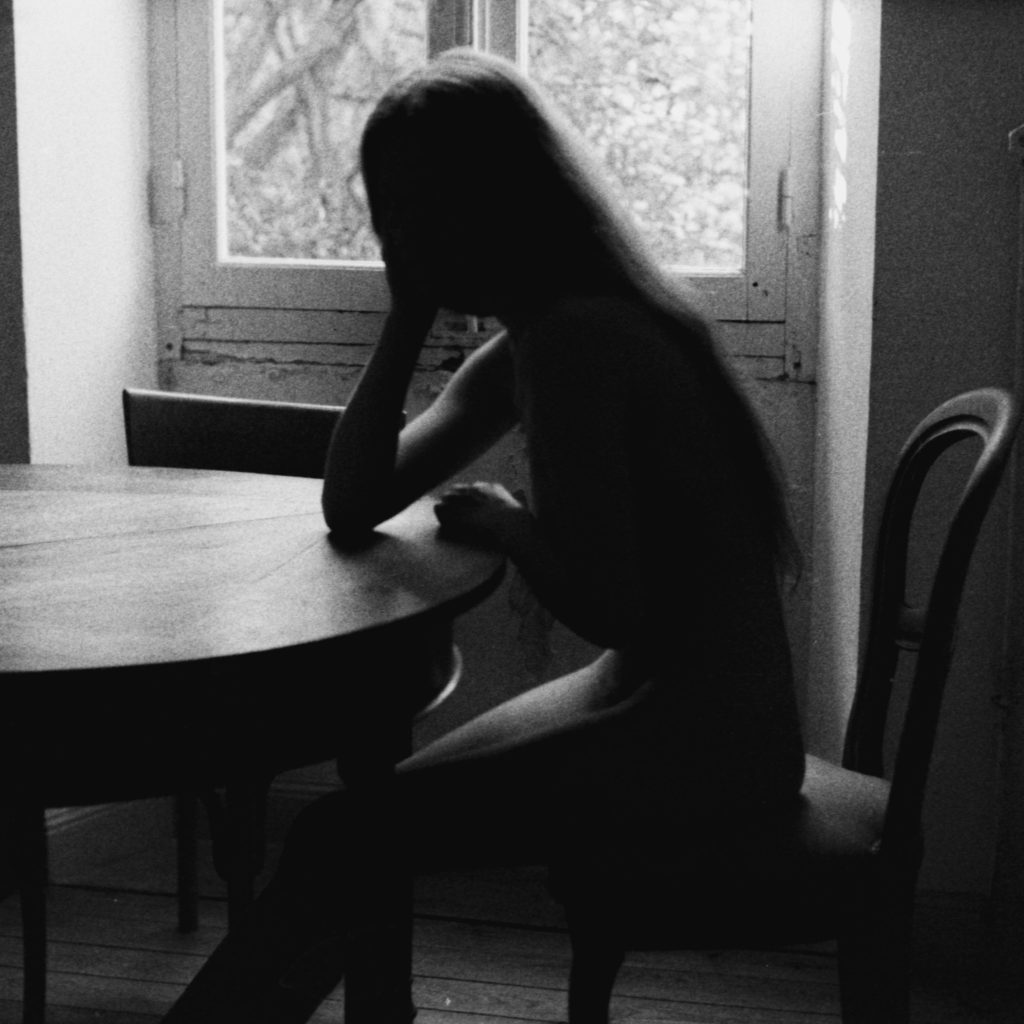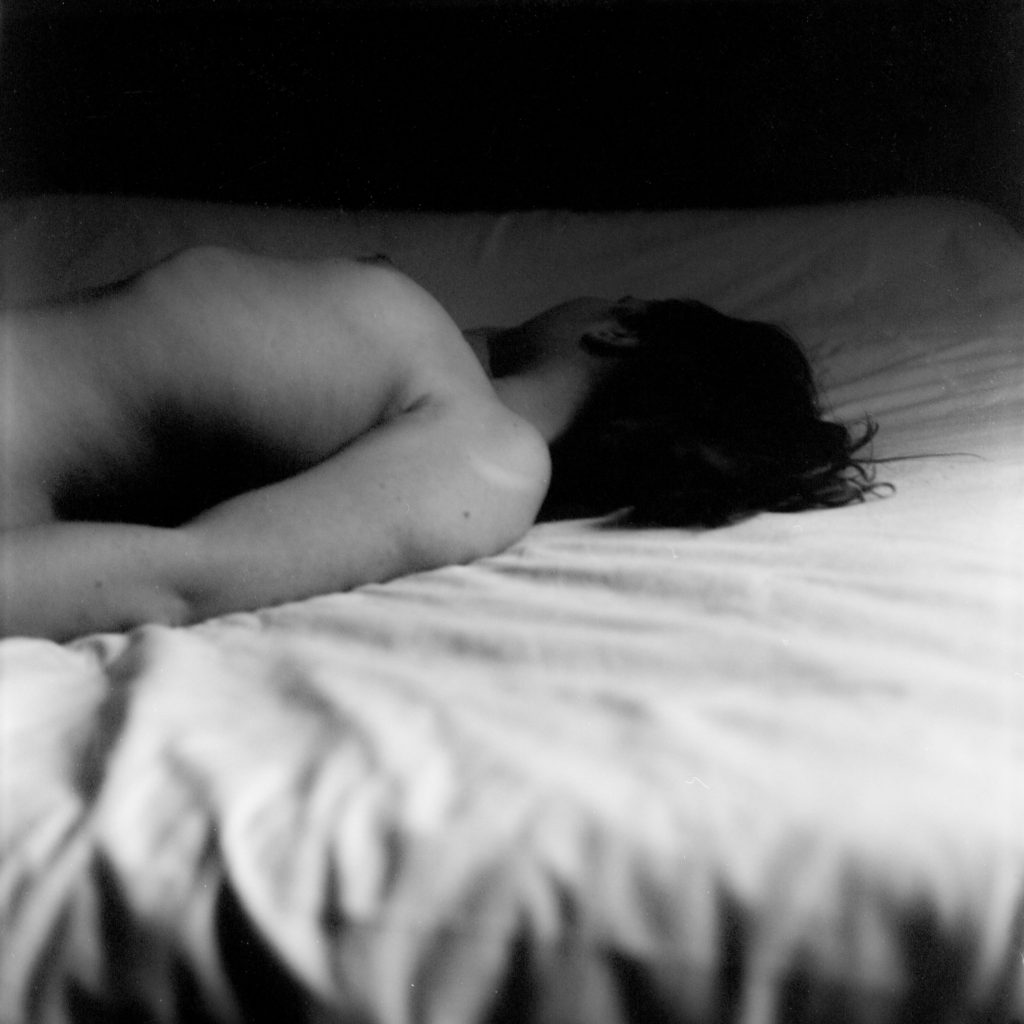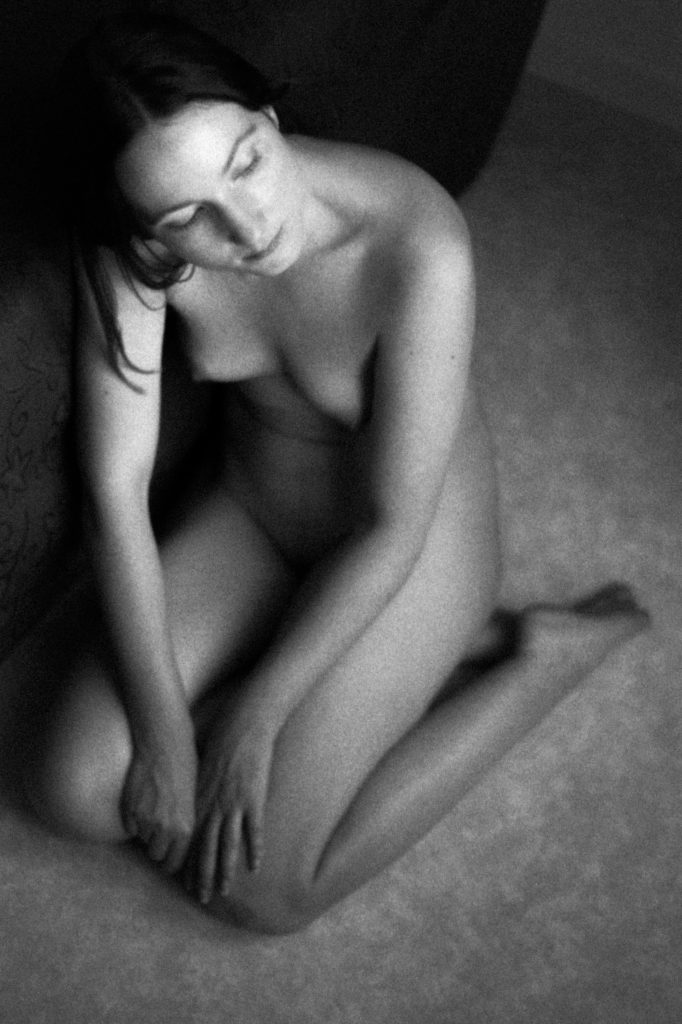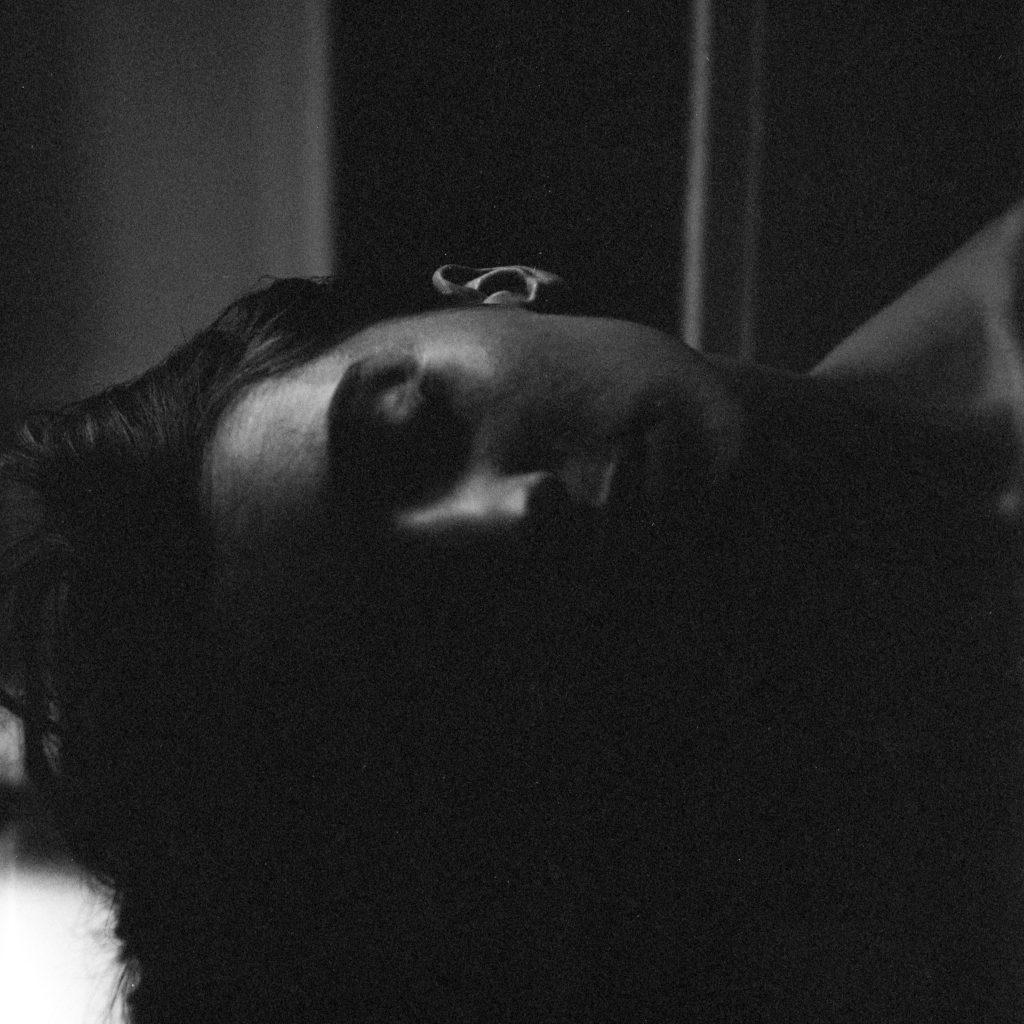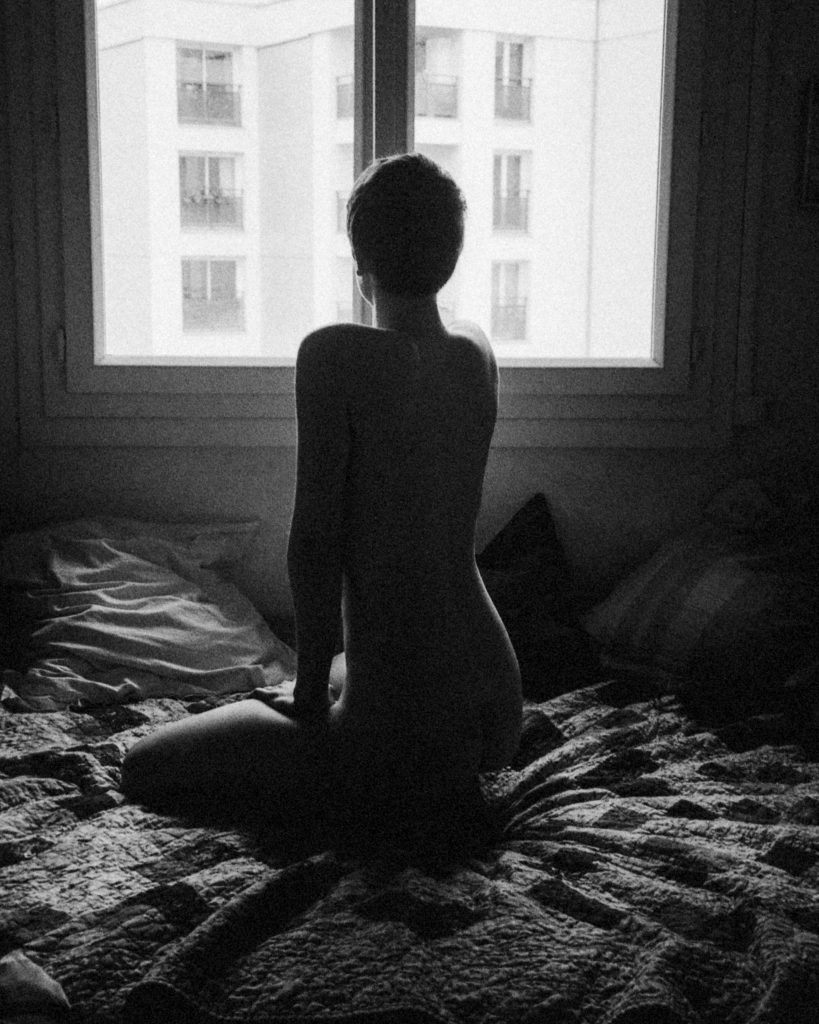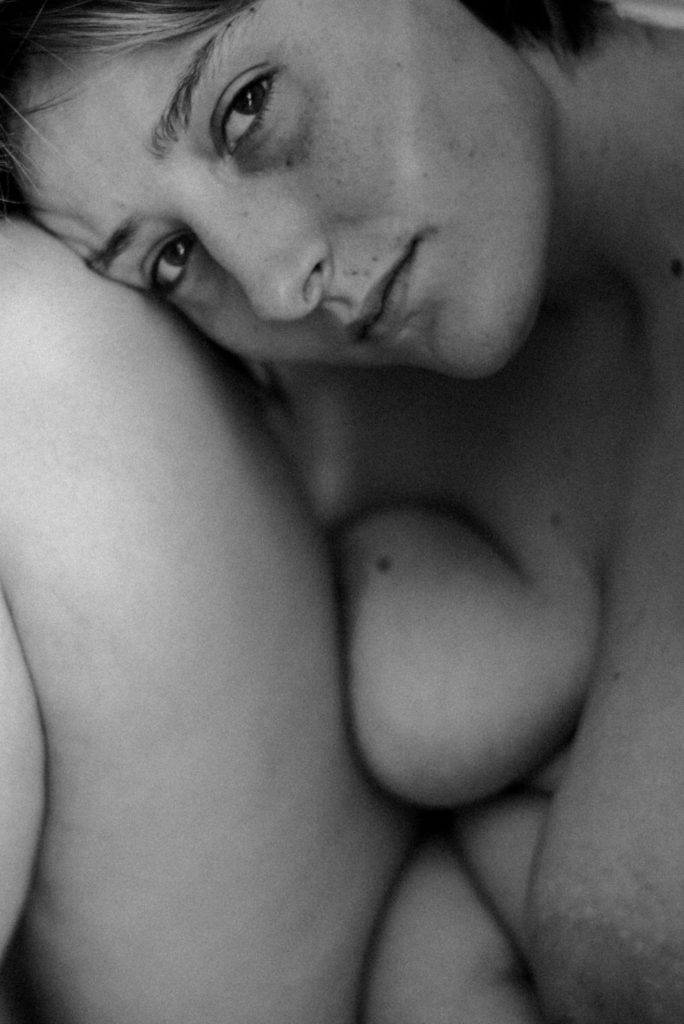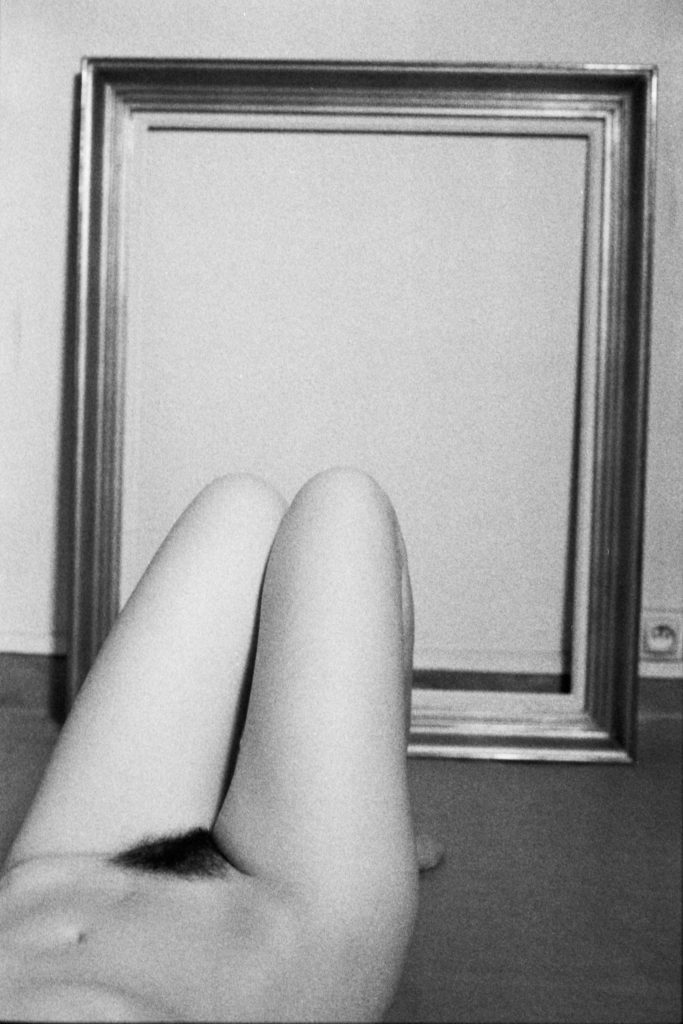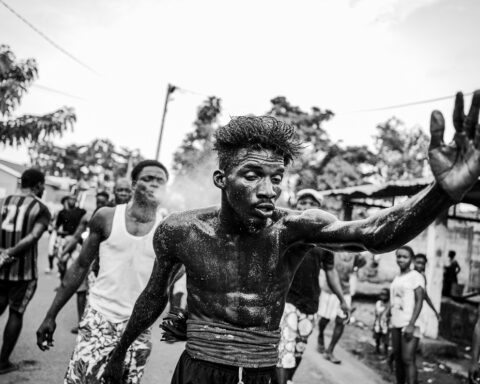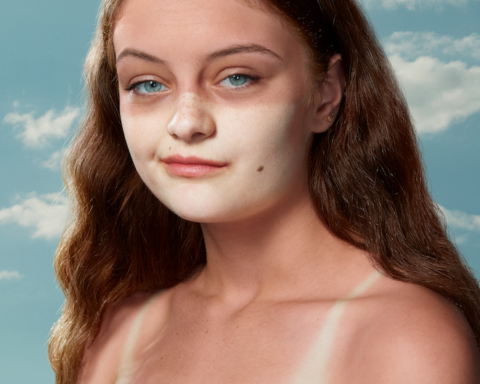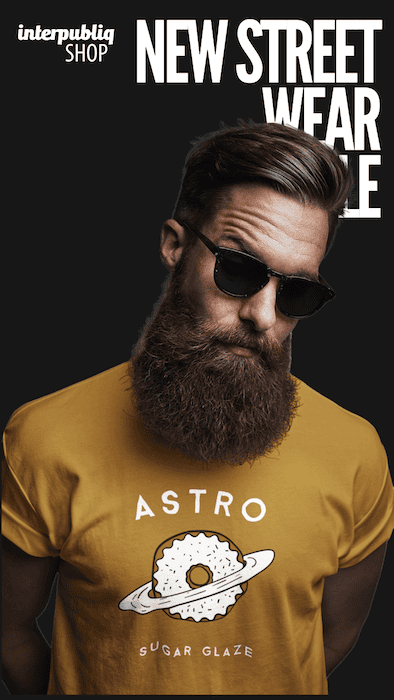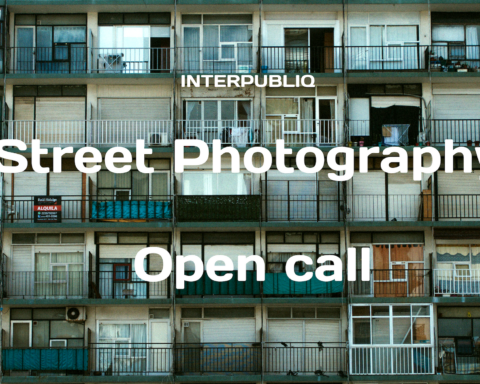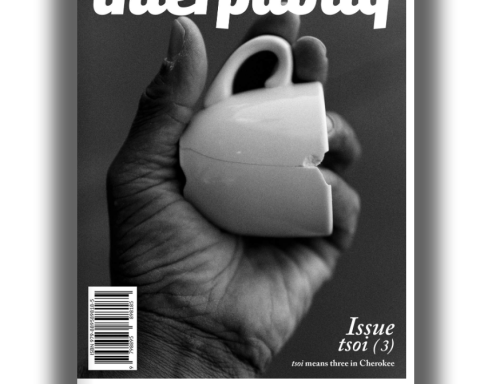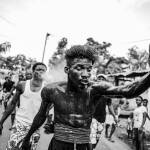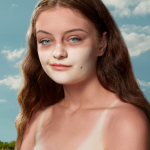Maguelone is a passionate photographer from the south of France, who loves capturing the beauty and intimacy of human relationships. She began taking photos at a young age, experimenting with different formats, styles and techniques. She developed a keen interest in black and white photography, as well as nude photography of herself and others, which she shared on her Instagram account.
What pushed you to start taking nude self-portraits?
I started taking self-portraits digitally, which I knew better and because it allowed me to work with feedback and be more precise when shooting. The idea of the nude came to me quite spontaneously, because it is photogenic (the skin reflects light well and offers many possibilities in black and white), because it escapes the problem of the meaning that we put behind the clothes, inscribed in an era, revealing environments, social groups, the nude spoke to me more for its simplicity and because it allows us to show ourselves as we are. I later turned to film photography, where I prefer the analog process from shooting to printing. The materiality of film and the discipline required when working with a limited number of exposures suited me better. The choice of black and white is firstly due to my own sensitivity: my eye has always been more attracted to black and white. It is important to me that a photo does not faithfully represent reality but that it is located “next to it”, that it moves away from it to offer something else. For me, it is black and white, absent from reality, which lends itself best.
How do you create the texture of your images? What type of film and camera do you use?
I mainly use a Canon AE1 and recently a Mamiya C330. I have never stuck to just one film: I often try different ones but I particularly appreciate high sensitivity films which allow for grain. The texture obtained is quite random because I like to experiment, both with films and with chemistry during development or even printing.
What emotions and messages do you want to convey through your photos?
I have never really been able to talk about the substance of what my photos convey. My self-portraits allow me to express a state, often negative emotions and transform them by putting them into images, but I like them to be expressed only through this without being named or verbalized. When I photograph models, I try to bring out in the image the emotions that I capture in them, I capture what they offer me. Despite the nude, there is a form of modesty in my images, which I keep when it comes to talking about them.
How do you balance your artistic vision and your political opinions in your work?
I did not initially consider my work to be political, but if it has a political dimension, it is feminist. As women, our bodies are commented on, objectified, and sexualized almost daily. Doing a female nude is tacitly reaffirming our right to be in this body, not to hide it, to express ourselves through it without addressing men, without the subject being sexual.
How do you deal with the challenges and criticism you face as a young progressive photographer?
I’ve never received negative reviews of my work, I think those who aren’t interested don’t take the time to tell me. I don’t consider myself progressive but I find for the moment that my work is well received and I am still pleasantly surprised to see that it affects other people.
What are some of your influences and inspirations for your style and technique?
I started photography having no technical mastery or photographic culture. But I always loved taking photos and was curious to learn more. On an aesthetic level as well as on a technical level, I was very inspired and I learned a lot from the photographer friends with whom I worked. Over time I became interested in big names in photography like Francesca Woodman, Lee Miller or Sally Mann whose work I admire, who must surely influence me but from whom I don’t think I really draw inspiration.
How do you choose the locations and settings for your photos? Do you have a favorite place to photograph?
The most important thing is to have good light conditions. I really like working indoors in natural light to have soft light and contrast, but most often I adapt to where I am.
What are some of the goals and plans you have for the future of your work?
I have released very few photographs on paper, and I still have difficulty creating series that I find coherent. But in the long term I would like to get closer to photo-objects, by doing an exhibition for example, and in the long term I would really like to make a book. But it’s not for now.


